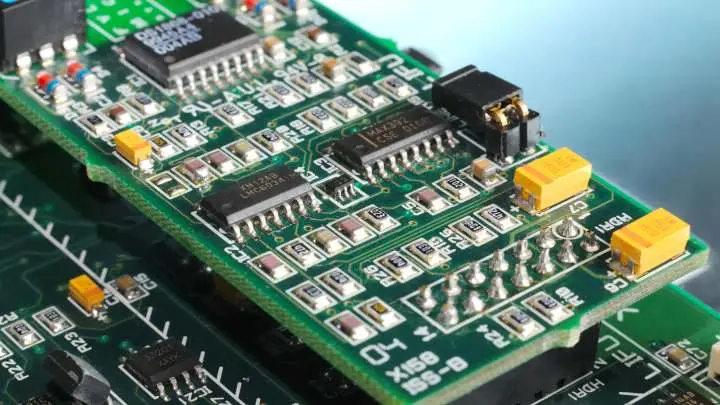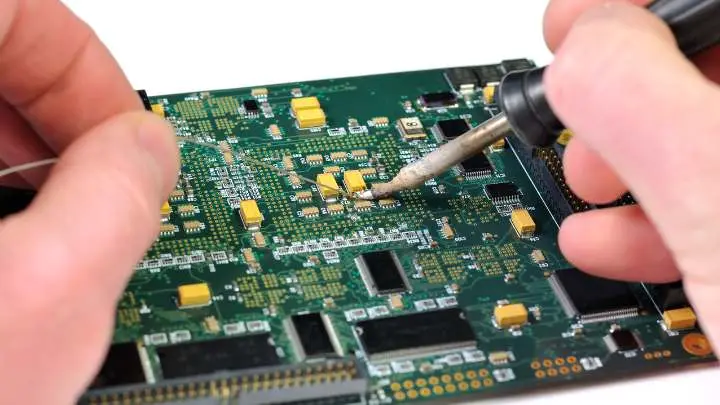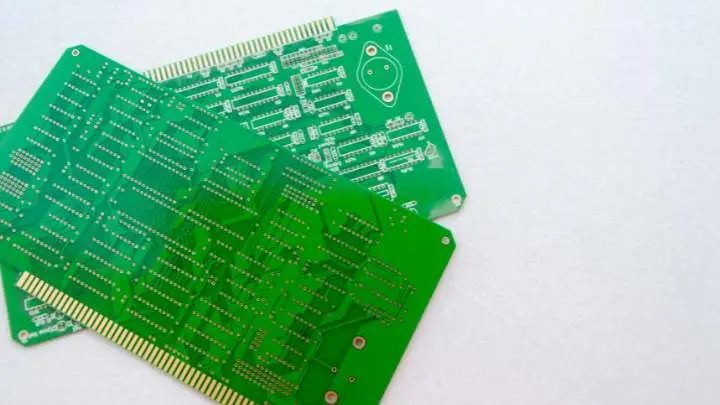Understanding SMT Assembly: Revolutionizing PCB Manufacturing
Introduction
In the ever-evolving world of electronics, SMT assembly stands out as a game-changer in printed circuit board (PCB) manufacturing. SMT has transformed the way we design, manufacture, and assemble electronic components, leading to more compact, reliable, and cost-effective products. But what exactly is Surface Mount Technology, and why is it so crucial in the electronics industry? Let’s delve into the intricate details of SMT, its components, assembly processes, and its undeniable advantages.
Summary of the Blog
This blog will provide an in-depth exploration of SMT assembly, covering its components, assembly processes, benefits, and impact on the electronics industry. It will cater to professionals in PCB manufacturing and assembly services, including engineers, startups, and hobbyists. Expect detailed explanations, bullet points, and tables for a comprehensive understanding. Ready to dive in?

Surface Mount Technology: An Overview
SMT assembly, often abbreviated as SMT, is a method for constructing electronic circuits in which the components are mounted directly onto the surface of printed circuit boards (PCBs). This technique contrasts with the traditional through-hole technology, where components have leads inserted into drilled holes in the PCB.
Key Components of SMT
SMT involves a variety of components, each designed to be soldered onto the PCB surface without needing holes. These components are smaller and allow for more compact and complex designs.
- Resistors: These components limit current flow and are available in various sizes for different applications. For instance, chip resistors can range from 0201 (0.6mm x 0.3mm) to larger sizes like 1210 (3.2mm x 2.5mm), offering flexibility in design.
- Capacitors: Used for storing and releasing electrical energy, these components come in different types, such as ceramic and tantalum. Ceramic capacitors are favored for their stability and high capacitance values, essential in power supply filtering.
- Integrated Circuits (ICs): These are complex circuits with multiple functions, packaged into a single chip. Examples include microcontrollers and memory chips, which are integral to the functionality of modern electronics.
- Transistors: Essential for switching and amplification in circuits, available in various configurations. Surface-mount transistors like SOT-23 packages are widely used for their compact size and efficiency.
- Diodes: Used for directing current flow in one direction, protecting components from damage. Schottky diodes in surface-mount packages are common in high-speed switching applications.
The SMT Assembly Process
The SMT assembly process involves several stages, each crucial for ensuring the reliability and performance of the final product. Let’s break down these stages:
Solder Paste Application
The first step in the SMT assembly process is the application of solder paste, a mixture of tiny solder balls and flux. This paste is applied to the PCB using a stencil to ensure precise placement on the pads where components will be mounted.
- Stencil Creation: A stencil is designed based on the PCB layout to ensure accurate application of solder paste. Laser-cut stencils provide high precision, ensuring that solder paste is applied exactly where needed.
- Solder Paste Printing: The stencil is placed over the PCB, and solder paste is applied using a squeegee to fill the stencil openings. This ensures that the paste is evenly distributed, which is critical for forming reliable solder joints.
Component Placement
After applying the solder paste, the next step is to place the SMT components on the PCB. This process is typically automated using high-speed placement machines.
- Pick and Place Machines: These machines use vacuum heads to pick components from reels and place them accurately on the PCB. High-speed machines can place tens of thousands of components per hour, significantly speeding up production.
- Programming and Calibration: The machines are programmed based on the PCB design, and calibration ensures precise placement. Regular calibration checks are necessary to maintain accuracy and reduce placement errors.
Reflow Soldering
Once the components are placed, the PCB undergoes reflow soldering, a process that melts the solder paste to create electrical connections between the components and the PCB.
- Preheat Zone: The PCB is gradually heated to avoid thermal shock. This stage helps in evenly heating the board and activating the flux in the solder paste.
- Soak Zone: The temperature is held steady to activate the flux and remove oxides. This stage ensures that the solder paste reaches a consistent temperature before entering the reflow zone.
- Reflow Zone: The temperature is raised to melt the solder, forming solid joints. The peak temperature typically reaches between 240°C to 250°C, ensuring complete melting of the solder paste.
- Cooling Zone: The PCB is slowly cooled to solidify the solder joints. Controlled cooling prevents thermal shock and ensures robust solder joints.

Inspection and Testing
The final stage in the SMT assembly process is inspection and testing to ensure the quality and functionality of the assembled PCB.
- Automated Optical Inspection (AOI): AOI systems use cameras to check for solder paste application accuracy and component placement. High-resolution cameras and sophisticated algorithms can detect misplacements, missing components, and solder defects.
- X-ray Inspection: This method is used to inspect solder joints beneath large components that AOI cannot see. X-ray inspection is critical for detecting hidden solder defects, especially in BGA (Ball Grid Array) packages.
- Functional Testing: The assembled PCB is tested to verify its performance according to design specifications. Functional tests simulate real-world operating conditions to ensure the board functions correctly.

Advantages of Surface Mount Technology
SMT offers numerous advantages over traditional through-hole technology, making it the preferred choice for modern electronics manufacturing.
Compact and Lightweight Design
SMT components are smaller and lighter, allowing for more compact and lightweight electronic devices. This is especially beneficial in industries like consumer electronics, aerospace, and medical devices.
- Higher Component Density: SMT allows for placing more components on a smaller PCB area. This is critical in devices like smartphones and wearable tech, where space is at a premium.
- Reduced Weight: Smaller components contribute to lighter overall device weight. This is advantageous in applications like drones and portable medical devices, where weight reduction is crucial.
- Complex Designs: Enables the creation of complex multi-layered PCBs. Multi-layer PCBs can accommodate more components and more complex circuitry, enhancing device functionality.
Improved Performance and Reliability
SMT offers enhanced electrical performance and reliability due to shorter electrical paths and better thermal management.
- Reduced Parasitic Elements: Shorter paths minimize inductance and capacitance issues. This is particularly important in high-frequency circuits, where parasitic elements can cause significant performance degradation.
- Better Thermal Performance: Improved heat dissipation leads to better reliability. SMT components have a lower thermal resistance, helping in efficient heat management.
- Higher Operating Frequencies: Suitable for high-frequency applications due to reduced parasitic effects. This makes SMT ideal for RF and microwave circuits.
Cost-Effectiveness and Efficiency
SMT assembly processes are highly automated, leading to lower manufacturing costs and increased production efficiency.
- Automated Assembly: Reduces labor costs and increases production speed. Automated pick-and-place machines can operate continuously, boosting throughput.
- Less Drilling Required: Eliminates the need for drilling holes, saving time and costs. Through-hole technology requires extensive drilling, which is both time-consuming and costly.
- Lower Material Costs: Smaller components often cost less than their through-hole counterparts. The reduced size of SMT components often translates to lower material costs.
Flexibility in Design
SMT allows for greater flexibility in PCB design, enabling designers to create more innovative and efficient electronic products.
- Design Versatility: Suitable for a wide range of applications and industries. From consumer electronics to industrial controls, SMT’s versatility makes it the go-to choice.
- Rapid Prototyping: Faster turnaround times for prototyping and production. Quick design iterations and fast assembly help in bringing products to market faster.
- Adaptability: Easily accommodates changes in design and component specifications. SMT allows for quick modifications, making it easier to update and improve designs.
Applications of Surface Mount Technology
SMT’s versatility and advantages make it ideal for a wide range of applications across various industries.
Consumer Electronics
SMT is widely used in consumer electronics due to its ability to create compact and reliable devices.
- Smartphones and Tablets: High component density and lightweight design are crucial. Modern smartphones pack numerous functionalities into a sleek form factor, thanks to SMT.
- Wearable Devices: Small size and reliability are essential for wearables like smartwatches. SMT allows for the integration of various sensors and communication modules in a compact package.
- Home Appliances: SMT contributes to the functionality and durability of modern appliances. Advanced features in smart home devices are enabled by compact SMT assemblies.
Automotive Industry
In the automotive industry, SMT plays a vital role in enhancing the performance and reliability of electronic systems.
- Engine Control Units (ECUs): SMT components ensure precise and reliable control. ECUs rely on SMT for managing engine performance, fuel efficiency, and emissions.
- Infotainment Systems: High-density PCBs are used in advanced infotainment systems. These systems integrate audio, navigation, and connectivity features, all made possible by SMT.
- Safety Systems: Reliable SMT assemblies are critical for safety features like airbags and ABS. Safety-critical systems depend on the reliability and precision of SMT components.
Medical Devices
The medical industry benefits from SMT’s ability to produce small, reliable, and high-performance electronic devices.
- Diagnostic Equipment: High precision and reliability are crucial for diagnostic tools. Devices like ECG machines and blood analyzers depend on SMT for accurate and reliable performance.
- Wearable Health Monitors: Small, lightweight, and reliable for continuous health monitoring. Health monitors and fitness trackers use SMT for integrating sensors and communication modules.
- Implantable Devices: Miniaturization and reliability are essential for implants. SMT’s ability to create compact and reliable circuits is critical for devices like pacemakers and cochlear implants.
Telecommunications
SMT is indispensable in the telecommunications industry for creating high-frequency and reliable electronic systems.
- Networking Equipment: High-density and high-performance PCBs are used in routers and switches. SMT enables the integration of advanced features and high-speed processing in networking equipment.
- Mobile Communication: SMT components are essential for smartphones and base stations. The miniaturization and performance capabilities of SMT support the demands of modern mobile communication.
- Fiber Optic Systems: Reliable and high-speed connections are ensured by SMT assemblies. Fiber optic transceivers and modules rely on SMT for high-speed data transmission.

Challenges in SMT Assembly
While SMT offers numerous advantages, it also presents some challenges that manufacturers need to address.
Component Handling and Placement
The small size of SMT components can make handling and placement challenging, requiring precise and automated equipment.
- Miniaturization: Smaller components are harder to handle manually. Advanced pick-and-place machines are necessary to handle tiny components accurately.
- Placement Accuracy: High precision is necessary to avoid misalignment. Misaligned components can cause functional failures and reliability issues.
- Static Sensitivity: Some SMT components are sensitive to static electricity, requiring careful handling. ESD (Electrostatic Discharge) protection measures are essential to prevent component damage.
Solder Joint Reliability
Ensuring the reliability of solder joints is critical for the overall performance and longevity of the assembled PCB.
- Thermal Cycling: Repeated heating and cooling can stress solder joints. Thermal cycling can cause solder joints to crack or become brittle over time.
- Mechanical Stress: Vibrations and mechanical shocks can impact solder joint integrity. Robust design and assembly practices are needed to withstand mechanical stresses.
- Contamination: Contaminants on the PCB surface can affect solder joint quality. Cleanliness and proper handling are crucial to prevent contamination and ensure strong solder joints.
Design and Layout Considerations
Designing PCBs for SMT requires careful planning to optimize component placement and electrical performance.
- Pad Design: Proper pad design is crucial for reliable solder joints. Design guidelines must be followed to ensure good solderability and mechanical strength.
- Thermal Management: Efficient heat dissipation is necessary to prevent overheating. Thermal vias, heat sinks, and other techniques are used to manage heat effectively.
- Signal Integrity: Ensuring signal integrity involves minimizing noise and interference. Design practices like proper grounding, shielding, and layout strategies help maintain signal integrity.
Future Trends in Surface Mount Technology
As technology continues to evolve, so does SMT assembly. Here are some emerging trends that are shaping the future of SMT.
Miniaturization and High-Density Integration
The demand for smaller and more powerful electronic devices is driving the trend toward further miniaturization and high-density integration.
- Advanced Packaging: Techniques like System-in-Package (SiP) and Chip-on-Board (CoB) are becoming more prevalent. These techniques integrate multiple functions into a single package, reducing size and improving performance.
- Nanoelectronics: Developing nano-scale components for even smaller and more efficient devices. Nanoelectronics push the boundaries of miniaturization and offer new possibilities for device functionality.
- 3D Printing: Using 3D printing technology for creating complex PCB designs and prototypes. 3D printing allows for rapid prototyping and the creation of intricate designs that are difficult to achieve with traditional methods.
Automation and Industry 4.0
Automation and the adoption of Industry 4.0 technologies are transforming the SMT assembly process.
- Smart Factories: Integrating IoT and AI for real-time monitoring and optimization. Smart factories use data analytics to improve production efficiency and product quality.
- Robotics and AI: Enhanced automation and precision in assembly processes. Robotics and AI improve the accuracy and speed of component placement, inspection, and testing.
- Digital Twins: Creating digital replicas of physical systems for better planning and maintenance. Digital twins help in predicting and preventing issues, optimizing production processes, and improving overall efficiency.
Sustainability and Eco-Friendly Practices
The electronics industry is increasingly focusing on sustainability and eco-friendly practices, and SMT is no exception.
- Lead-Free Soldering: Reducing the use of hazardous materials in the assembly process. Lead-free soldering is becoming the standard, minimizing environmental impact and improving safety.
- Recycling and Reuse: Developing processes for recycling and reusing electronic components. Sustainable practices in manufacturing and end-of-life management help reduce electronic waste.
- Energy Efficiency: Implementing energy-efficient practices in SMT manufacturing. Reducing energy consumption in production processes helps lower carbon footprints and operational costs.
Conclusion
Surface Mount Technology has undeniably revolutionized the electronics industry, offering compact, reliable, and cost-effective solutions for PCB manufacturing and assembly. By understanding the intricacies of SMT, from its key components to the assembly process and its various applications, professionals in the electronics industry can harness its full potential to innovate and improve their products.
As technology advances, SMT continues to evolve, embracing trends like miniaturization, automation, and sustainability. For engineers, startups, and hobbyists alike, staying informed about these developments is crucial for staying competitive in a fast-paced industry.
Do you need any additional sections or further elaboration on specific aspects of Surface Mount Technology?



